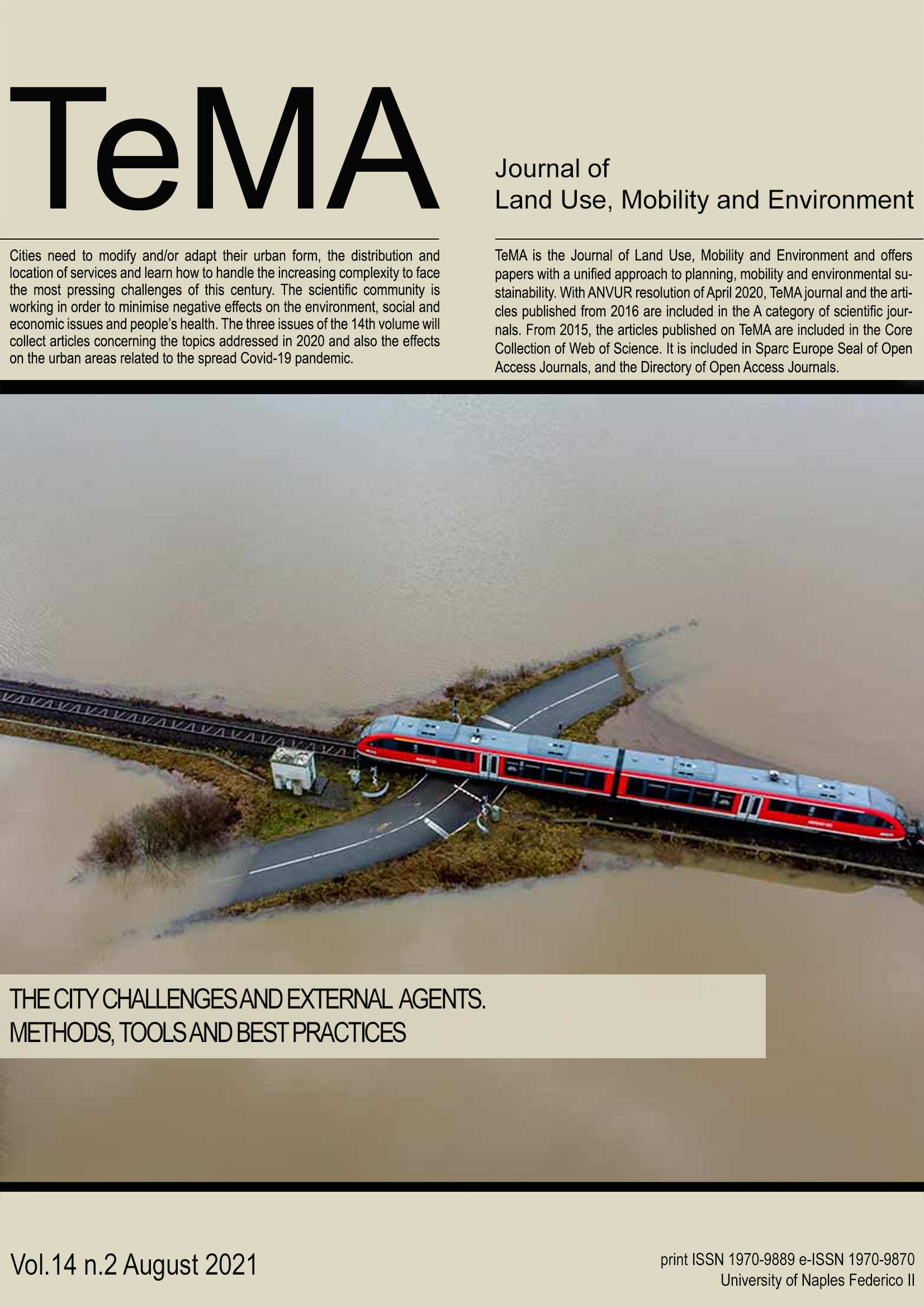Territorial disparities in Tuscan industrial assets: a model to assess agglomeration and exposure patterns
DOI:
https://doi.org/10.6093/1970-9870/7976Keywords:
Territorial Disparities, Territorial Exposure, Industrial Agglomerates, Tuscany, Urban and Regional PlanningAbstract
Industrial agglomerates are considered drivers of urban development. This reiterative process of industrial growth, nevertheless, tends to increase regional territorial disparities, an asymmetrical development pattern that can lead to productive spaces’ underuse or abandonment. Although numerous economics studies about industrial distribution and territorial disparities were so far conceived, those are based on dated spatial methodologies. These consider space as an abstract background, hence, leaving unexplored several spatial relations between production, infrastructural networks and industrial agglomerates organization. Novel models ought to consider real attributes of space, being crucial to economic recovery in times of territorial constrains; with this in consideration, the paper objective is to construct and discuss a spatial-economic model tailored to assess territorial disparities in industrial agglomerates distribution and the condition here defined as territorial exposure. Exposure, represented by a composite spatial index, denotes disparities in territorial endowments, identified as factors of sensitivity or support to firms placed within industrial agglomerates, spatial conditions that can affect their capabilities to react to periods of economic recession and their post-crisis recovery. The model analyses Tuscany Region’s industrial structure and depicts territorial disparities in a GIS-based environment. The spatial knowledge produced can aid regional initiatives for economic recovery directed to Tuscan industries.
Downloads
Downloads
Published
How to Cite
Issue
Section
License



